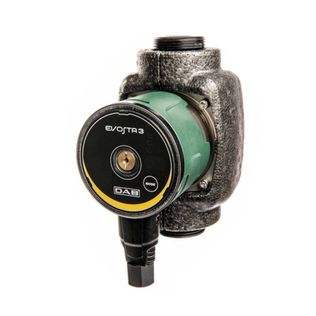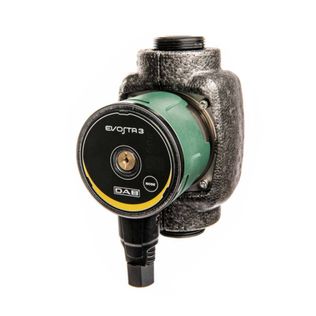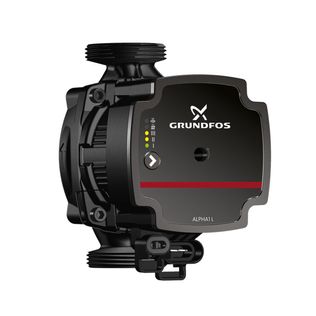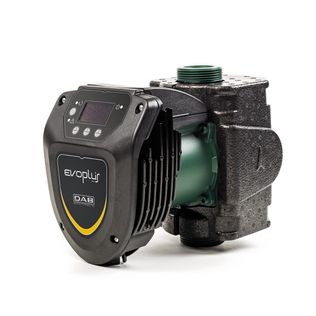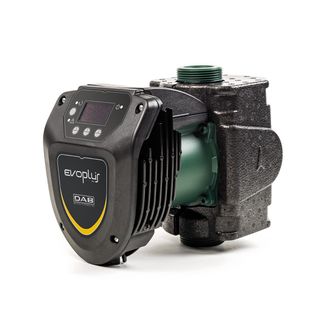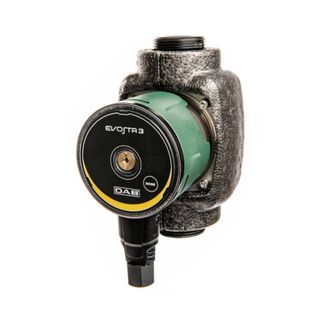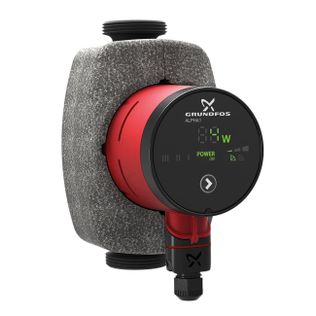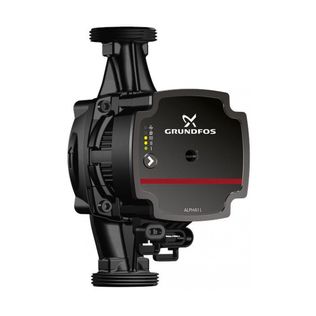Buy a central heating pump
The central heating pump is often also called a circulation pump or underfloor heating pump. These water pumps are all the same, but they have different names based on their applications. Depending on what you want to use it for and, in particular, its connection size, it will be easy to select the appropriate pump from our product range.
What is a central heating pump?
A central heating pump provides heating systems with hot water, and can be found in every house or building with a radiator and/or underfloor heating. If both are present, there will usually be several central heating pumps. Larger houses/buildings often also have several circulation pumps to provide optimal circulation.
How does a circulation pump work?
The only purpose of a central heating pump is to circulate water within a closed circuit. It is installed inside or next to the central heating boiler and fitted directly between the water pipes. The pump is supplied with cold/lukewarm water. Depending on the required temperature in the house/building, the water will be heated in the boiler. The circulator will then pump the water - heated or not - through the pipelines by rotating the impeller (vanes) at a certain speed.
Integrated speed controller
Older, conventional circulation pumps usually have three adjustable speeds: the higher the speed, the higher the pump's energy consumption will be. New central heating pumps (e.g. the DAB Evosta) are fitted with an integrated speed controller, which automatically controls its rotational speed, and does not restrict the pump to the three speeds at which conventional pumps run. This ensures an average saving of 70% in annual energy costs. This makes it even more interesting to look for an economical central heating pump.
When to replace a central heating pump?
We can safely say that the central heating pump is the heart of your central heating or underfloor heating system. Furthermore, it is usually the circulation pump that needs to be replaced if the system does not work, or less optimally.
Save energy with a new central heating pump
A central heating pump is usually not replaced until it breaks down and/or gets noisy. However, you can also decide to replace your hot water pump in order to save energy in comparison with your current model. Old circulation pumps with a fixed-capacity power system use about three times more energy than the models we carry, because they usually have three settings that can be set manually. The normal setting (setting 2) of these older models consumes an average of 450 kWh per year, which amounts to £166.89 (based on the average price of energy in September 2023). Our central heating pumps are fitted with a speed controller, so that they run only at the RPM speed required at that moment.
How much money does it save?
Annually, these pumps consume an average of 135 kWh, which comes down to £50.06. That is a 70% difference in costs! With a view to saving energy, it will therefore be well worth installing a new pump. It involves an average saving of £116.83 in energy costs per year, which may be a good reason to consider a replacement.
How do I know which central heating pump I need?
Depending on your installation, the central heating pump is easily found behind the front panel of your central heating system. In most cases, the required size can be found on your current, older pump, which should match that of the circulation pump we supply. If not, you can easily find the brand and serial number in the replacement table. If you want to replace a central heating pump yourself, our explanation below will show you what to do.
Which central heating pumps do we have in our range?
We have opted to include a few different central heating or circulation pumps in our range of products. These sizes enable us to suggest a replacement pump for any installation, instantly saving you energy costs.
Replacing a circulation, central heating, or underfloor heating pump is not very difficult, and will save you money because you do not need to call in a fitter. Check the step-by-step explanation and/or video. Of course, you can also have the central heating pump installed by a professional, but you will save significantly if you order it from us at a competitive price. In that way, you only need to pay for the fitting costs.
Replacing a circulation pump
All circulation pumps, even if they are several decades old, can be replaced directly with a new model. In this way, you immediately start saving energy. The only important thing is to know the brand and type of your current circulation pump, which you can look up in this replacement table before you check which central heating pump is suitable to replace it.
A circulation pump can easily be replaced by any handyman who knows how to handle water pump pliers, even if they need to be borrowed.
Follow the following replacement steps:
Turn off the water supply in your central heating pipes
Unplug the boiler and circulation pump
Using the water pump pliers, undo the two swivels
Push them apart and remove the current circulation pump
Put the new circulation pump between them, noting the pump's direction of rotation (see arrow on the side of the pump body)
Fasten the two swivels using water pump pliers
Plug in the boiler and the new circulation pump
Turn on the water supply
